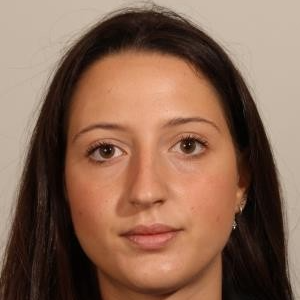Title : Recuperation systems for fluorinated gas at the CERN LHC experiments
Abstract:
In the context of particle physics, different families of gaseous detectors are operated with gas mixtures containing fluorinated gases for different purposes at the Large Hadron Collider (LHC) at the European Organization for Nuclear Research (CERN). The main gases used in these detectors are tetrafluoromethane (CF4), tetrafluoroethane (C2H2F4), sulphur hexafluoride (SF6), perfluorobutane (C4F10). Given their high Global Warming Potential (GWP) and the increasingly stringent European regulations regarding the use and trade of these gases, different approaches have been adopted for reducing the Green House Gas (GHG) emissions. One of the strategies, currently operating at the LHC Experiments, is the use of gas recuperation systems. At the CERN LHC experiments four operational GHG recovery systems are operational: two for the CF4, one for the R134a (C2H2F4), and one for the C4F10. They are industrial-scale systems, each of which relies on different principles of gas separation and purification. Indeed, in most cases, fluorinated gases are used within gas mixtures where other components have lower Global Warming Potential (GWP). Considering the unique gas mixtures used in particle detectors, these recovery systems have been specifically developed as no industrial apparatus currently exists to address these particular requirements. The separation of fluorinated gases is carried out mainly through membranes, absorbers, or distillation. In the case of CF4, it is separated from a CF4/Argon/CO2 mixture (in the proportions of 10/40/50). The R134a is recuperated from a gas mixture of C2H2F4/iC4H10/SF6 (in the proportions of 95.2/4.5/0.3) where freon forms an azeotropic mixture with the isobutane. The C4F10 is separated from CO2, O2 and N2. It is worth to notice that these gas mixture undergo high electric field and radiation dose in the LHC experiments and therefore dedicated studies on the breakdown products have also been performed. The recovery system efficiencies are approximately 70% for the CF4, 80% for the R134a, and 90% for the C4F10. The goal is to reuse the purified gases within gas mixtures sent to detectors in variable fresh/recovered fractions, depending on the purity of the obtained gas (usually between 90% and 98%). The various stages of the recovery processes are monitored through gas chromatographic analyses, GC/MS (Gas Chromatography/Mass Spectrometry), and infrared (IR) analyses. The use of these recovery systems in recent years has led to significant savings both in economic and emissions terms at CERN. In 2023, 950 kg of recovered CF4 were utilized out of a total of 2800 kg, and 1200 kg of R134a were used out of a total 20000 kg. It's worth noting that the R134a system is still under test and it was operational only for some weeks starting from September 2023 onward. The development and construction of two new recovery systems for SF6 and C4F10 are still ongoing, and they are expected to be operational by the end of 2024.



